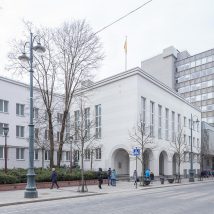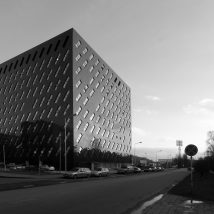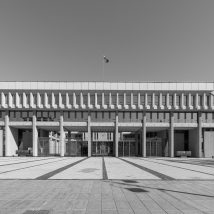
This building was built in the late 19th C. to house the court of the Russian Imperial Court of Vilnius Province. The huge symmetrical building with two inner courtyards takes up almost half the block, and is contiguous with Gediminas Avenue. Similar structure and inner courtyards were common to other European courts. The main entrance, located in the middle of the three-storey building with a basement, meets with the lobby with two ornate staircases. The façades and interiors are characterised by neoclassical shapes, with an abundance of eclectic details.
In 2000, the base of the building was inscribed with the names, as well as dates of birth and death, of the people who died for Lithuania’s freedom. This idea was suggested by artist Gitenis Umbrasas.
Throughout the country’s history and changing governments, the building has hosted various institutions. Currently, there is the Museum of Genocide Victims, the Office of the Chief Archivist of Lithuania (which keeps the documents of the former KGB archive), the Genocide and Resistance Research Centre of Lithuania, the Court of Appeal of Lithuania, and other courts.











